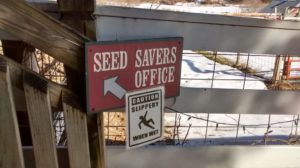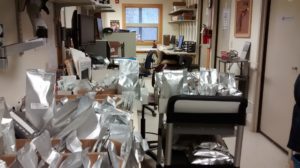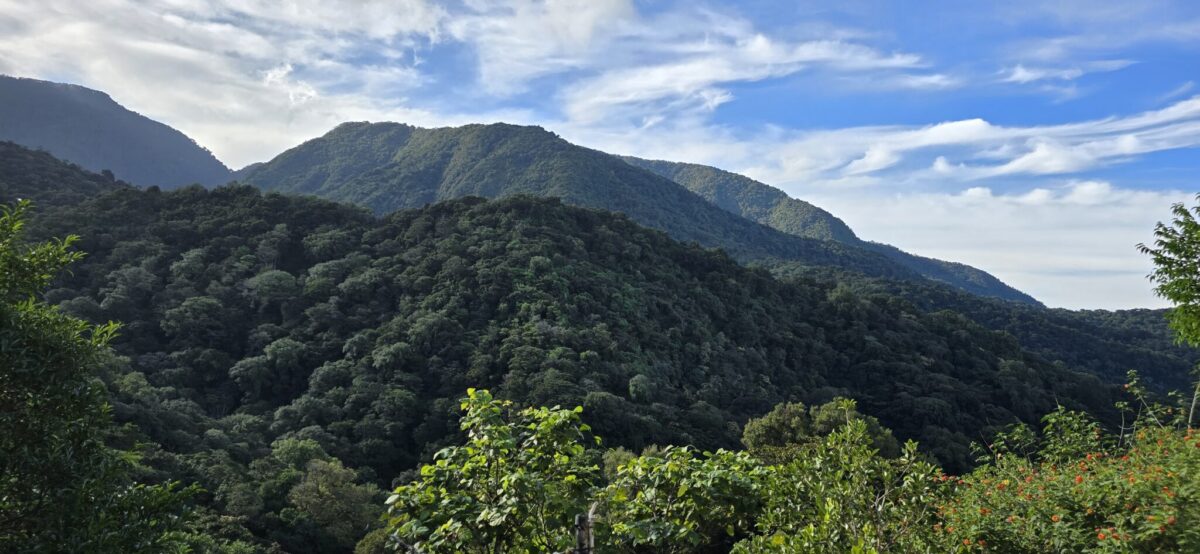My second co-op has been spent at an organization by the name of Seed Savers Exchange in Decorah, Iowa. Seed Savers Exchange is an organization dedicated to conserving and promoting America’s culturally diverse but endangered garden and food crop heritage for future generations, and they carry this dedication out by collecting, growing, and sharing heirloom seeds and plants. To find out more about the organiz ation, follow this link: https://www.seedsavers.org/.
ation, follow this link: https://www.seedsavers.org/.
The length of my intern position was concentrated in the preservation department of the organization, where I worked in four subsections: seed processing, evaluation, seed history, and the seed lab. Each subsection presented me with unique responsibilities that gave me the opportunity to explore the entirety of Seed Savers Exchange in fragments and as a whole.
My internship began in seed processing, where I was responsible for cleaning and preparing seeds for germination testing. Because my position took place in the winter, I caught the tail end of the crops that needed to be prepared from the 2016 “grow-outs” for germination testing; grow-outs were crops selected for growing at Heritage Farm, the farm on the Seed Savers Exchange campus, from the thirty-thousand accession seed collection for various purposes such as increasing inventory, testing purity, and identifying possible duplicates within the collection which could later be deaccessioned and removed from the collection. After the selected crops were grown, they were harvested for seeds. The harvested seeds were then sent to the area in which I worked for the first week and processed. Processing involved examining the seeds for any obvious impurities that could be removed, singulating the seeds with high-pressure air, running the seeds through a column blower to select for the more viable seeds, sorting through them once more with tweezers, and finally placing them in a bag and marking them ready for testing. The purity of the seeds was maintained by never having more than one bag of seed open at a single time. This part of my internship involved the most manual labor, which was nice as it kept me alert and awake.
Following seed processing, I was assigned a position with the evaluation team. The evaluation team of Seed Savers Exchange is accountable for a diverse set of responsibilities, ranging from gathering data from crop taste tests to evaluating the purity of seed inventory. My tasks included editing and renaming images according to the organization protocol, entering taste test data and comments into Excel spreadsheets, and recording characteristics of seeds. While I did not find this position to be the most interesting, it was still engaging in that I was getting to experience yet another branch of the organization at its deepest level.
I was later  placed in the seed history subsection of preservation after two weeks with the evaluation team. My work within this subsection started off slow, but it came to be my favorite subsection to work in out of my internship experience as a whole. The seed history team is responsible for tracking down and researching each variety of seed within the collection; this research is performed by leafing through seed catalogs, some predating 1850, in the organization’s library for varieties by the same or similar name, utilizing online databases of catalogs and countless other online resources, and contacting individuals who were responsible for donating the seeds to the collection. I became completely captivated through researching the accessions, and I constantly found myself pleasantly consumed by the research required for verifying the credibility of each accession I was assigned to. My experience within this section had a strong impact on my plans for future work endeavors.
placed in the seed history subsection of preservation after two weeks with the evaluation team. My work within this subsection started off slow, but it came to be my favorite subsection to work in out of my internship experience as a whole. The seed history team is responsible for tracking down and researching each variety of seed within the collection; this research is performed by leafing through seed catalogs, some predating 1850, in the organization’s library for varieties by the same or similar name, utilizing online databases of catalogs and countless other online resources, and contacting individuals who were responsible for donating the seeds to the collection. I became completely captivated through researching the accessions, and I constantly found myself pleasantly consumed by the research required for verifying the credibility of each accession I was assigned to. My experience within this section had a strong impact on my plans for future work endeavors.
I am currently working in the seed lab, where I am performing germ tests and packaging seeds for storage and distribution. The germ tests are extremely meticulous, which allows me to stay involved and attentive to the details required for an unhindered test. Packaging, a more physically laborious task, keeps me on my feet. I have packaged for a few different destinations, w ith one being the global seed vault in Svalbard, Norway. For a little background information, the seed vault in Svalbard is located deep inside a mountain on a remote island where conditions are ideal for preserving seeds. For more on Svalbard, visit this link: https://www.croptrust.org/our-work/svalbard-global-seed-vault/. I find it extremely satisfying to know that I am handling seeds that may be used far into the future to maintain the global food gene bank and preserve resources.
ith one being the global seed vault in Svalbard, Norway. For a little background information, the seed vault in Svalbard is located deep inside a mountain on a remote island where conditions are ideal for preserving seeds. For more on Svalbard, visit this link: https://www.croptrust.org/our-work/svalbard-global-seed-vault/. I find it extremely satisfying to know that I am handling seeds that may be used far into the future to maintain the global food gene bank and preserve resources.
This experience has been greatly satisfying and worth the winter weather that has struck Decorah during my time here. I have been given the privilege of residing in a farm house five minutes walking-distance from the main campus of the organization, and the land surrounding Seed Savers Exchange is absolutely beautiful. While I do not feel like I have fully experienced Decorah, I am going to do my best to explore what I can with the little time I have left.






Grass Seeds | September 25, 2017
|
I really enjoy reading your blog and waiting for your next update. I appreciate all the work you put into this site, helping out others with your services.